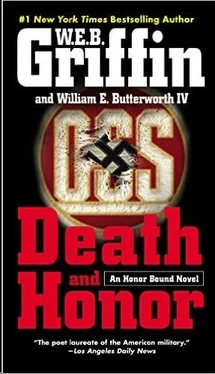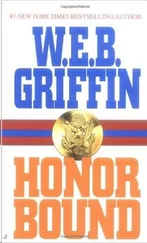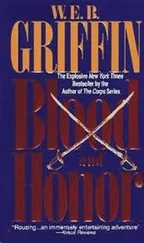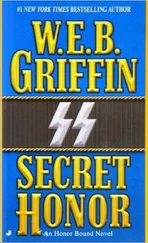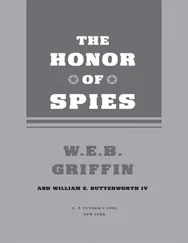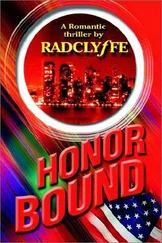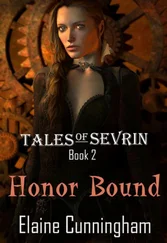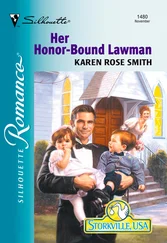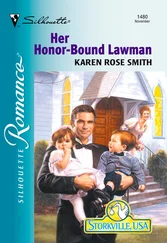Griffin W.E.B. - Honor Bound 04 - Death and Honor
Здесь есть возможность читать онлайн «Griffin W.E.B. - Honor Bound 04 - Death and Honor» весь текст электронной книги совершенно бесплатно (целиком полную версию без сокращений). В некоторых случаях можно слушать аудио, скачать через торрент в формате fb2 и присутствует краткое содержание. Год выпуска: 2009, Издательство: Penguin USA, Inc., Жанр: Старинная литература, на английском языке. Описание произведения, (предисловие) а так же отзывы посетителей доступны на портале библиотеки ЛибКат.
- Название:Honor Bound 04 - Death and Honor
- Автор:
- Издательство:Penguin USA, Inc.
- Жанр:
- Год:2009
- ISBN:нет данных
- Рейтинг книги:4 / 5. Голосов: 1
-
Избранное:Добавить в избранное
- Отзывы:
-
Ваша оценка:
- 80
- 1
- 2
- 3
- 4
- 5
Honor Bound 04 - Death and Honor: краткое содержание, описание и аннотация
Предлагаем к чтению аннотацию, описание, краткое содержание или предисловие (зависит от того, что написал сам автор книги «Honor Bound 04 - Death and Honor»). Если вы не нашли необходимую информацию о книге — напишите в комментариях, мы постараемся отыскать её.
Honor Bound 04 - Death and Honor — читать онлайн бесплатно полную книгу (весь текст) целиком
Ниже представлен текст книги, разбитый по страницам. Система сохранения места последней прочитанной страницы, позволяет с удобством читать онлайн бесплатно книгу «Honor Bound 04 - Death and Honor», без необходимости каждый раз заново искать на чём Вы остановились. Поставьте закладку, и сможете в любой момент перейти на страницу, на которой закончили чтение.
Интервал:
Закладка:
“What’s this all about?” Graham said as they pulled up to, and stayed behind, the Horch.
“The theory is that if they try to bushwhack me, as they bushwacked my father, they’ll probably hit the Horch first,” Frade said matter-of-factly. “There’s two guys with Thompsons in the Horch, and there’s another Thompson under your seat. ‘Surprise, surprise! ’ ”
“You think that’s likely?” Graham said.
Frade looked at him and shook his head in disbelief.
III
[ONE]
Estancia San Pedro y San Pablo Near Pila, Buenos Aires Province Republic of Argentina 1925 4 July 1943
Once they were out of the city, the Horch and the Ford station wagon heading south on National Route Two, Graham bluntly had asked: “So, what is it that’s so important I had to come down here to get you to share it with me?”
Frade had replied by putting his index finger to his lips, then jerking his thumb toward Enrico, who was sitting in the next row of seats with his shotgun between his knees.
Graham didn’t press for an answer.
For two reasons , he thought.
One, if he doesn’t want Enrico to hear what he has to say, he probably has a good reason.
Two, pushing him won’t work. All that would accomplish would be to make both of us angry.
That portion of the Code for the Governance of the Naval Service requiring immediate and cheerful, willing obedience to orders just doesn’t apply in this circumstance.
He knows it. Worse, I know it.
And even worse, he knows that I know it.
Graham had been to the estancia before, but he realized after an hour or so on Route Two, with the glowing needle on the Ford’s speedometer seldom dropping below one hundred kph, that he had forgotten how far from Buenos Aires it was.
They turned off Route Two at Lezama and, twenty-odd kilometers later, passed through the village of Pila. The maps of Argentina showed that the macadam road ended at Pila. It didn’t, but five hundred meters outside Pila, Estancia San Pedro y San Pablo began. The road here was privately owned, and had been built and was maintained by the proprietors of Estancia San Pedro y San Pablo and Estancia Santa Catalina. Estancia Santa Catalina was on the other side of Estancia San Pedro y San Pablo.
Graham had known even before he had met Cletus Frade that Estancia Santa Catalina was owned by Señora Claudia de Carzino-Cormano. He knew, too, that Doña Claudia’s relationship with El Coronel Jorge Guillermo Frade over a twenty-year period had kept both of them from partaking of the sacrament of communion in the Roman Catholic Church, the canons of which deny the sacrament to those who have shared—in the case of Doña Claudia and El Coronel were sharing continuously and almost notoriously—sexual congress outside the bonds of holy matrimony absent confession and absolution, which carried with it their promise to go forth and sin no more.
Several times Graham had met Doña Claudia—a svelte woman in her mid-fifties with gray-flecked, luxuriant black hair—and had liked her. He wondered if she would be at the estancia. He knew she often was, and this pleased him because he thought of her as a restraining influence—especially with regard to El Coronel Juan Domingo Perón—on Cletus Frade.
Ten kilometers or so down the private road, the headlights of the station wagon illuminated a brick and wrought-iron sign at the side of the road. It read SAN PEDRO Y SAN PABLO. Five hundred meters past the sign, there was a fork in the road. But no signs or arrows indicated where either fork led.
The Horch and the Ford took the left fork. Fifteen kilometers down that road Graham caught a first glimpse of the brightly illuminated, sprawling, white-painted stone main building. It sat with its outbuildings in a three-hectare, manicured garden, all set within a windbreak of a triple row of tall cedars.
As they came closer, he saw, just outside the windbreak, the airfield. There were four airplanes parked there, three Piper Cubs and a Lodestar, the latter painted a glistening red. The paint job was the result of a presidential order.
Franklin Delano Roosevelt had told General Hap Arnold of the U.S. Army Forces that he wanted to send an airplane, a Beechcraft Staggerwing, to an important Argentine to replace one that had been destroyed. The President had not shared with General Arnold how it had been lost, just that it had, and that he wanted the replacement to be as much like the lost plane as possible, including the color. And that it be brand new.
With more important things on his mind, General Arnold had delegated the order to others. Two days later, the USAAF procurement officer at the Beech Aircraft Company in Wichita, Kansas, had reported to his superior that in late 1940, a Staggerwing Beechcraft bright red in color had been sold to a Colonel Frade in Buenos Aires, and this was almost certainly the airplane President Roosevelt had in mind. The procurement officer also reported that no new Staggerwings of any color were available.
To the military mind, this was only a minor problem in executing an order of the commander in chief. The order was immediately amended to provide that an airplane of at least equal quality be obtained, painted Beechcraft red, and sent by the most expeditious means to Colonel Frade. It was soon discovered that Lockheed had delivered a number of Lodestar aircraft to the Air Forces. They were inarguably of at least equal quality, and moreover could be flown down there. A dozen Lodestars had recently been configured as airliners, sold to Varig, the national airline of Brazil, and flown down there by USAAF pilots.
“Colonel,” the order had been issued to the procurement officer, “make sure the Lodestar you send to Colonel Frade be painted Beechcraft red, be as nicely configured as the ones we sold to the Brazilians, and get it on its way within forty-eight hours.”
Three minutes later, they reached the main house. There were a number of people standing on the verandah.
Somehow , Graham decided, they knew exactly when we would be here. Which means that he has people—his gauchos—stationed where they can watch the highway.
One of the men on the verandah was wearing what clearly identified him as a gaucho: a black, wide, flat-brimmed hat; billowing black bombachas tucked into calf-high black boots; a wide, red, coin-studded leather belt; a leather vest; and a horn-handled foot-long knife in a silver scabbard at the back of the belt.
Most of the others were armed with Colt .45 ACP semiautomatic pistols carried in leather holsters hanging from web belts.
The gaucho came quickly off the porch, walked up to the Ford wagon, came to attention, and saluted.
“Happy Fourth of July, sir,” Chief Radioman Oscar J. Schultz, USN, said. “If the colonel will give me his gear, I’ll take care of it.”
Graham returned the salute as a Pavlovian reaction, then smiled as it occurred to him that if there was a more blatant violation of the Navy regulation that “naval personnel will not render the hand salute while in civilian attire” he couldn’t imagine what it would be.
“Good to see you, Chief,” Graham said. “My suitcase is in the Horch.”
“I’ll handle it for the colonel,” Chief Schultz announced, and went to the Horch.
As Graham got out of the Ford, he saw that the other men—two in the uniform of U.S. Army officers, several of the others wearing parts of U.S. Army uniforms, and the rest in the clothing of gauchos—had come to attention. He wondered if someone had actually called “Attention!” or whether popping to attention had been the Pavlovian response on the part of one of the sergeants to the presence of a full-bull colonel, and the others had joined in.
Читать дальшеИнтервал:
Закладка:
Похожие книги на «Honor Bound 04 - Death and Honor»
Представляем Вашему вниманию похожие книги на «Honor Bound 04 - Death and Honor» списком для выбора. Мы отобрали схожую по названию и смыслу литературу в надежде предоставить читателям больше вариантов отыскать новые, интересные, ещё непрочитанные произведения.
Обсуждение, отзывы о книге «Honor Bound 04 - Death and Honor» и просто собственные мнения читателей. Оставьте ваши комментарии, напишите, что Вы думаете о произведении, его смысле или главных героях. Укажите что конкретно понравилось, а что нет, и почему Вы так считаете.
